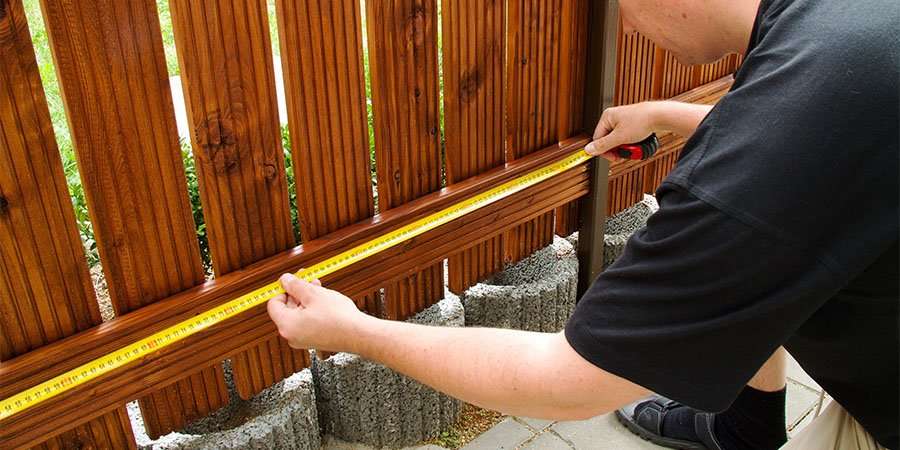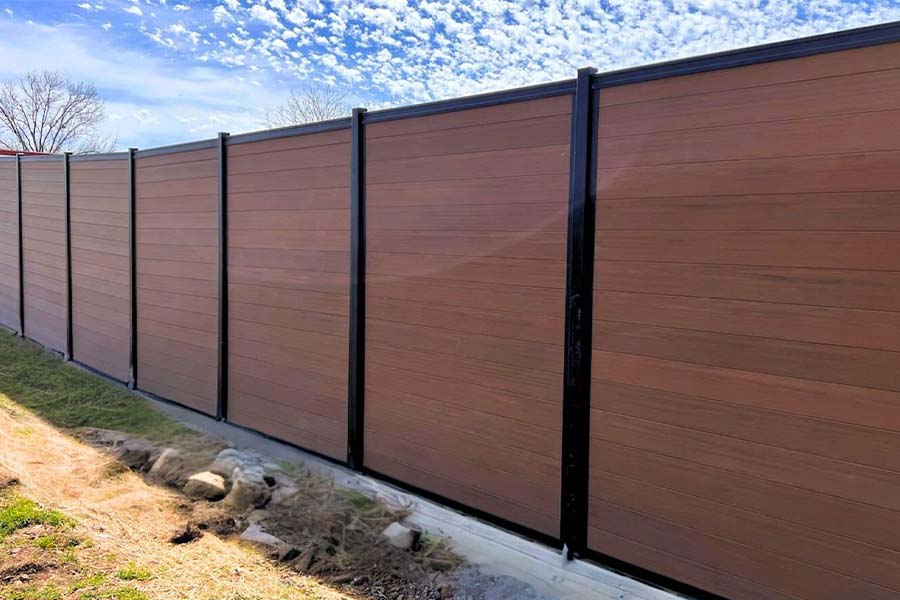All Categories
Featured
Your fence is exposed to different weather year-round, and while it functions as a vital part of your building, it's additionally one of the most susceptible aspects when it involves weather-related damage. Extreme winds, hefty rainfall, extreme temperatures, and UV direct exposure can all take a toll on your fence's stability, bring about deterioration. Luckily, there are a few steps you can require to protect your fencing and extend its lifespan. Right here are some effective techniques to safeguard your fence from weather-related damage.
Wooden Fences: While wood is a traditional choice for fencing, it is at risk to rot, insect, and warping damages, especially in areas with high moisture. Pressure-treated timber or cedar is more sturdy, but regular maintenance is necessary to maintain it in great condition. Vinyl Fence: Vinyl is an excellent choice for those seeking a low-maintenance and weather-resistant fencing. It's unsusceptible wetness, won't warp or split in the heat, and resists fading from UV rays. Metal Secure fencing: Wrought iron and light weight aluminum are sturdy products for fence, yet they require a rust-resistant finish to safeguard them from deterioration due to dampness. A protective coating or normal maintenance can prevent rust and extend the life of metal fencings. Compound Fencing: Made from a blend of timber fibers and plastic, composite fences are very immune to weather components, consisting of dampness, heat, and UV rays. This material uses an equilibrium of toughness and visual appeal. Selecting a material fit to your climate will give far better protection for your fence the long term.
Seal or Discolor the Timber: Using a premium sealant or tarnish to your timber fence produces a water resistant barrier that protects against dampness from getting in the timber. It also helps protect the timber from UV rays, which can trigger discoloration and drying. Reapply Sealer Routinely: In time, the protective obstacle of your sealer or tarnish can wear down. Relying on your climate, it's a good idea to reapply every one to 2 years to keep the wood shielded. This treatment will certainly protect the fencing's appearance, stop rot, and extend its lifespan.
![]()
For extra defense, consider utilizing wind-resistant mesh displays or panels in areas where wind is a substantial worry. This added layer can help reduce the force that the wind puts in on your fencing.
Inspect Drainage: Make certain that the ground around your fencing inclines far from the blog posts. Correct water drainage allows water to move far from the fence, avoiding wetness accumulation. Set Up Drainage Equipments: In locations where water drainage is a concern, consider including a French drain or crushed rock around the base of your fencing articles to reroute water far from the framework. Good water drainage can prevent rot, corrosion, and other forms of weather-related degeneration.
![]()
![]()
Concrete Grounds: Establish fence blog posts in concrete to stop them from loosening with time due to soil erosion or changing ground. Metal Dental Braces: Adding steel dental braces to fence articles can supply added toughness and minimize the danger of leaning or damaging. Strengthening your articles guarantees that your fence will certainly remain in place, also throughout serious climate.
For wooden fencings, delicately wash the surface area with a moderate detergent to eliminate dirt and crud. For vinyl fencings, use a soft towel and cleaning remedy to stop accumulation. For steel fencings, examine for corrosion and sand it off before using a fresh layer of paint. Final thought. Your fencing is an important attribute of your residential property, and with the best care, it can stand up to the challenges posed by the climate. By picking long lasting products, doing routine upkeep, and strengthening weak factors, you can safeguard your fence from the elements and expand its life. Routine examinations, applying protective coverings, and taking actions to regulate wetness and wind direct exposure will certainly help make certain that your fence remains solid, functional, and eye-catching for years to find.
- Select Weather-Resistant Products. The materials you select for your fencing can have a significant influence on its capability to endure the elements. Various products are much better geared up to handle particular weather. Right here's a malfunction of just how various materials stand up against the weather:
Wooden Fences: While wood is a traditional choice for fencing, it is at risk to rot, insect, and warping damages, especially in areas with high moisture. Pressure-treated timber or cedar is more sturdy, but regular maintenance is necessary to maintain it in great condition. Vinyl Fence: Vinyl is an excellent choice for those seeking a low-maintenance and weather-resistant fencing. It's unsusceptible wetness, won't warp or split in the heat, and resists fading from UV rays. Metal Secure fencing: Wrought iron and light weight aluminum are sturdy products for fence, yet they require a rust-resistant finish to safeguard them from deterioration due to dampness. A protective coating or normal maintenance can prevent rust and extend the life of metal fencings. Compound Fencing: Made from a blend of timber fibers and plastic, composite fences are very immune to weather components, consisting of dampness, heat, and UV rays. This material uses an equilibrium of toughness and visual appeal. Selecting a material fit to your climate will give far better protection for your fence the long term.
- Regularly Deal With Wood Fencings. If you have a wooden fence, securing it from temperature, moisture, and sunshine fluctuations is crucial. Timber can take in moisture from rain, snow, or moisture, triggering it to rot and wear away. Right here's how you can secure wood fencings:
Seal or Discolor the Timber: Using a premium sealant or tarnish to your timber fence produces a water resistant barrier that protects against dampness from getting in the timber. It also helps protect the timber from UV rays, which can trigger discoloration and drying. Reapply Sealer Routinely: In time, the protective obstacle of your sealer or tarnish can wear down. Relying on your climate, it's a good idea to reapply every one to 2 years to keep the wood shielded. This treatment will certainly protect the fencing's appearance, stop rot, and extend its lifespan.

- Install Windbreaks. Strong winds can create substantial damage to fences, specifically those made of tall structures or light-weight products. These all-natural barriers can help disperse wind, avoiding straight gusts from harming your fencing.
For extra defense, consider utilizing wind-resistant mesh displays or panels in areas where wind is a substantial worry. This added layer can help reduce the force that the wind puts in on your fencing.
- Guarantee Appropriate Drainage Around Your Fence. Standing water is one of the leading reasons for fence damage, especially for wooden fencings. Water can weaken the fencing messages, creating them to rot and weaken quicker. To stop this:
Inspect Drainage: Make certain that the ground around your fencing inclines far from the blog posts. Correct water drainage allows water to move far from the fence, avoiding wetness accumulation. Set Up Drainage Equipments: In locations where water drainage is a concern, consider including a French drain or crushed rock around the base of your fencing articles to reroute water far from the framework. Good water drainage can prevent rot, corrosion, and other forms of weather-related degeneration.

- Trim Overhanging Branches and Vines. Trees and plants near your fencing may look like a decorative addition, yet they can position risks when left untreated. Overhanging tree branches and creeping plants can create damages to your fence throughout storms or high winds. Additionally, vines can trap wetness against wood fences, quickening the rotting process. To protect your fence, trim any type of branches or plants that hang over or near the fence routinely. This will reduce the chance of dropping debris and avoid dampness build-up.
- Reinforce Fence Posts. Fence posts are vulnerable to shifting, leaning, and decomposing, especially throughout periods of extreme climate. If your fence is in a location that experiences high winds or ices up during wintertime, it's important to reinforce the blog posts to maintain security.

Concrete Grounds: Establish fence blog posts in concrete to stop them from loosening with time due to soil erosion or changing ground. Metal Dental Braces: Adding steel dental braces to fence articles can supply added toughness and minimize the danger of leaning or damaging. Strengthening your articles guarantees that your fence will certainly remain in place, also throughout serious climate.
- Routine Examinations and Upkeep. Check your fence after storms or heavy rainfall to look for problems such as loose boards, drooping posts, or rusted locations. Additionally, cleaning your fencing occasionally helps maintain its problem.
For wooden fencings, delicately wash the surface area with a moderate detergent to eliminate dirt and crud. For vinyl fencings, use a soft towel and cleaning remedy to stop accumulation. For steel fencings, examine for corrosion and sand it off before using a fresh layer of paint. Final thought. Your fencing is an important attribute of your residential property, and with the best care, it can stand up to the challenges posed by the climate. By picking long lasting products, doing routine upkeep, and strengthening weak factors, you can safeguard your fence from the elements and expand its life. Routine examinations, applying protective coverings, and taking actions to regulate wetness and wind direct exposure will certainly help make certain that your fence remains solid, functional, and eye-catching for years to find.
Latest Posts
The Benefits of Routine Vehicle Maintenance at Montclare Auto Repair Saves You Money
Published May 26, 25
1 min read
Choosing the Right Roofing Color: Influence On Power Effectiveness
Published May 24, 25
1 min read
Boost Your Home's Outside with Weathercraft's House siding Solutions
Published May 24, 25
1 min read
More
Latest Posts
The Benefits of Routine Vehicle Maintenance at Montclare Auto Repair Saves You Money
Published May 26, 25
1 min read
Choosing the Right Roofing Color: Influence On Power Effectiveness
Published May 24, 25
1 min read
Boost Your Home's Outside with Weathercraft's House siding Solutions
Published May 24, 25
1 min read